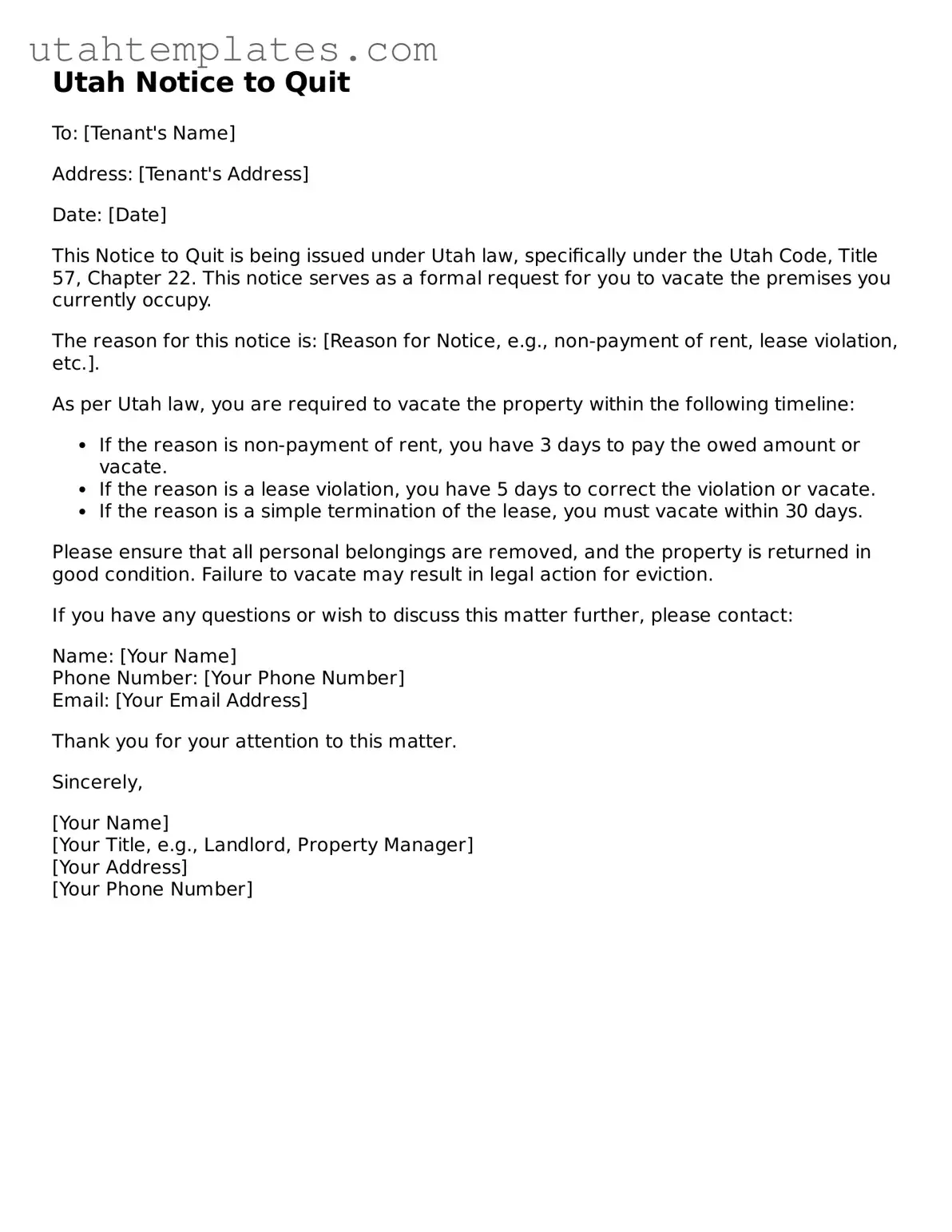Utah Notice to Quit
To: [Tenant's Name]
Address: [Tenant's Address]
Date: [Date]
This Notice to Quit is being issued under Utah law, specifically under the Utah Code, Title 57, Chapter 22. This notice serves as a formal request for you to vacate the premises you currently occupy.
The reason for this notice is: [Reason for Notice, e.g., non-payment of rent, lease violation, etc.].
As per Utah law, you are required to vacate the property within the following timeline:
- If the reason is non-payment of rent, you have 3 days to pay the owed amount or vacate.
- If the reason is a lease violation, you have 5 days to correct the violation or vacate.
- If the reason is a simple termination of the lease, you must vacate within 30 days.
Please ensure that all personal belongings are removed, and the property is returned in good condition. Failure to vacate may result in legal action for eviction.
If you have any questions or wish to discuss this matter further, please contact:
Name: [Your Name]
Phone Number: [Your Phone Number]
Email: [Your Email Address]
Thank you for your attention to this matter.
Sincerely,
[Your Name]
[Your Title, e.g., Landlord, Property Manager]
[Your Address]
[Your Phone Number]
